#durant scripted events
Explore tagged Tumblr posts
Text
Solo: A Star Wars Story premiered on May 25th, 2018. The screenplay was by Jonathon and Lawrence Kasdan. Lawrence Kasden had previously scripted the Star Wars films Episode V: The Empire Strikes back, Episode VI The Return of the Jedi, and Episode VII The Force Awakens. There was some debate over who was going to be listed officially as director. Ultimately, Ron Howard, who reshot 80% of the original footage, was given credit and the original directors Phil Lord and Christopher Miller were given executive producer credits. The movie took place between Star Wars Episode III: Revenge of the Sith and Rogue One: A Star Wars Story/Episode IV: A New Hope. The movie told how Han Solo (originally played by Harrison Ford, but in this version played by Alden Ehrenreich) left Corellia, joined the Emperial Infantry, met Chewbacca (originally played by Peter Mayhew, but in this version by Joonas Suotamo), became a smuggler, met Lando Calrissian (originally played by Billy Dee Williams, but in this version by Donald Glover), made the Kessel Run in less than 12 parsecs, got his hand blaster, got the disguise that Lando would use in Jobba's palace, got the Millinium Falcon, and why the Millinium Falcon had a unique dialogue pattern. The film kept it as a surprise that it also had the first cinematic appearance of Darth Maul (still protrayed by Ray Park and voiced by Sam Witwer) since his supposed death in Episode I: A Phantom Menace. The movie also introduced new characters to the Star Wars cinematic universe such as Tobias Beckett (Woody Harrelson), Qi'ra (Emilia Clarke), Val (Thandiwe Newton), L3-37 (Phoebe Waller-Bridge), Dryden Vos (Paul Bettany), Rio Durant (Jon Favreau), Enfys Nest (Erin Kellyman), Lady Proxima (Linda Hunt), Rebolt (Ian Kenny), Korso (John Tui), Weazel (Warwick Davis), Margo (Charlotte Louise), Chanteuse (Sema-Tawi Smart), Ralakili (Clint Howard), Quay Tolsite (Dee Tails), Sagwa (Attila Vajda), Tak (Anthony Daniels), Karjj (Kiran Shah), Eager Scrumrat (Fraser Kelly), Lexi (Lily Newmark), Ottilie (Samantha Colley), and Argus Panox (Derek Arnold). The reaction to the film did not meet expectations and delayed and changed the plans for further theatrical Star Wars Story films. ("Solo: A Star Wars Story", flm, event)
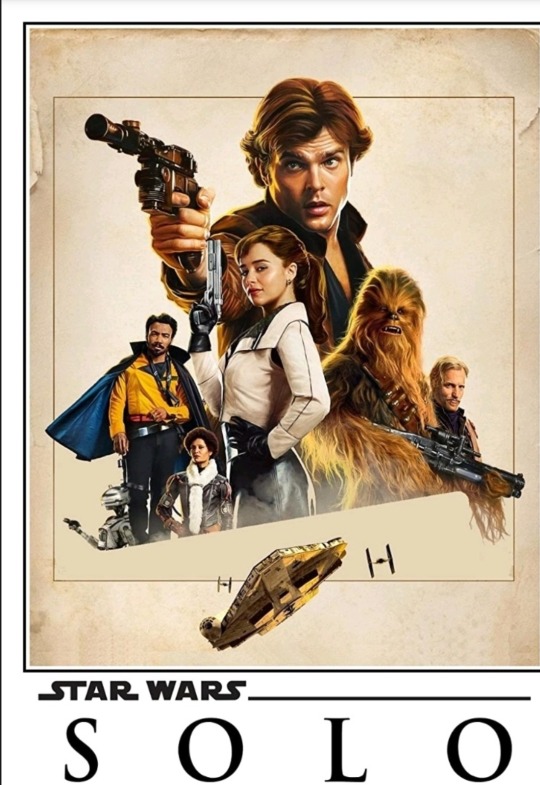
#nerds yearbook#real life event#first appearance#sci fi movies#may#2018#star wars#a star wars story#solo#han solo#sw#jonathon kasdan#lawrence kasdan#ron howard#george lucas#phil lord#christopher miller#alden ehrenreich#tobias beckett#woody harrelson#qi'ra#emilia clarke#lando calrissian#donald glover#chewbacca#joonas suotamo#val#thandiwe newton#l3 37#phoebe waller bridge
4 notes
·
View notes
Text
[April 30th, 2024] MASTERPIECE on PBS and Mammoth Screen today announce a major new reimagining of John Galsworthy’s Forsyte novels. Planned as a returning series, the first season of six episodes follows the lives of the wealthy Forsyte family in 1880s London and is based on Galsworthy’s Nobel Prize-winning tale of love, loyalty, ambition and betrayal.
The Forsyte Saga reunites MASTERPIECE with acclaimed British screenwriter Debbie Horsfield and UK production company Mammoth Screen, the team behind global television hit Poldark.
The stellar ensemble cast includes Francesca Annis, Jack Davenport, Tom Durant Pritchard, Jamie Flatters, Millie Gibson, Danny Griffin, Susan Hampshire, Owen Igiehon, Tuppence Middleton, Stephen Moyer, Joshua Orpin, Josette Simon and Eleanor Tomlinson.
BAFTA winner Francesca Annis (Flesh and Blood) plays formidable Forsyte matriarch Ann, with Stephen Moyer (Sexy Beast, True Blood) as her eldest son, Jolyon Senior, head of the family stockbroking firm Forsyte & Co. Danny Griffin (Fate: The Winx Saga) plays his bohemian son Jo, Tuppence Middleton (Downton Abbey: A New Era) is Jo’s status-driven wife Frances, and Eleanor Tomlinson (One Day) plays Louisa Byrne, a Soho dressmaker and Jo’s first love.
Jack Davenport (The Morning Show, Ten Percent) plays Ann’s competitive younger son James, with Joshua Orpin (Titans) as James’ shrewd and sometimes ruthless son Soames. Millie Gibson (Doctor Who) plays Irene, the dancer whom Soames falls in love with. Tom Durant Pritchard (This Is Going To Hurt) plays Monty Dartie, James’ son-in-law.
Josette Simon OBE (Anatomy of a Scandal) is Mrs. Ellen Parker Barrington, a wealthy heiress and friend of the Forsyte family, with Jamie Flatters (Avatar: The Way Of Water) as architect Philip Bosinney and Owen Igiehon (Disclaimer) as lawyer Isaac Cole. Susan Hampshire, OBE (star of the 1967 BBC Forsyte Saga for which she received the first of her three lead actress Emmys), plays Lady Carteret.
The Forsyte Saga is directed by Meenu Gaur (Murder Is Easy) and Annetta Laufer (Get Millie Black) and is produced by Sarah Lewis (The Long Shadow). Filming begins in May, 2024 in locations in England, Wales and Italy.
Screenwriter Debbie Horsfield notes, “It was an honor to be asked to write a bold new reimagining of Galsworthy’s epic saga. Our show is in part a prequel to the events of the first book, but also an opportunity to expand the world and place the women of the family center stage. It’s a love letter to the original story while offering an exciting new perspective.”
Damien Timmer, CCO & Founder of Mammoth Screen said, “It’s thrilling to be teaming up again with Debbie on this iconic story. Everything about The Forsyte Saga is huge – it’s an epic canvas, and Debbie’s magnificent scripts have delivered a truly great ensemble cast. I hope audiences worldwide will be captivated by the secrets of Soames, Irene, Jolyon and other Forsyte family members as they are laid bare for a new generation of fans!”
Susanne Simpson, Executive Producer of MASTERPIECE, added, “We’re proud to commission a new, original take on The Forsyte Saga. This sweeping, romantic drama portrays how duty binds a family together until it conflicts with matters of the heart. Debbie Horsfield’s inspired scripts will be realized by an exceptional cast and supported by a lavish production. We’re thrilled to be creating another one of the high-quality period dramas that MASTERPIECE has always been known for.”
The Forsyte Saga was previously adapted as a Hollywood film in 1949 and for television in 1967 and 2002. The 2002 series aired on MASTERPIECE on PBS
2 notes
·
View notes
Text
Existentialism: Podcast 1 Script
Existentialism Defining existentialism Mid-twentieth century france Said to have been pushed into existence during/after the events of world war 2 Lot of moral issues Nazi death camps Bombings of nagasaki and hiroshima Made people really question their morals and grapple with the ideas of political freedom and meaning of life / death Groundwork to existentialist philosophers Kierkegaard and Nietzsche Husserl and Hiedegger as well.. Husserl focuses on transcendentalism, which is so much we need to cover that in a separate episode Søren Kierkegaard Mention fact about eliott smith either/or album being named after kierkegaard’s either/or work 1813-1855 Known as “father of existentialism” (stanford) While he is the father of it, its controversial if he himself is actually an existentialist Stanford encyclopedia thinks so i’m just going to go with that Encyclopedia Britannica says Kierkegaard is considered the father of existentialism because he emphasizes individual existence as an ongoing process of becoming. He also focuses a lot on anxiety and dread (Sartre refers to this as anguish), huge focus on existentialism!!! (think camus and sartre) Spends time defining the self, which is usually metaphysical (think Kant) but his focus on anxiety and dread is what makes this more existential, as well as seeing individual existence as an ongoing process of becoming. Definition of metaphysics, according to will durant - the inquiry into the ultimate and fundamental reality From copenhagen Studied philosophy and theology, giving his work a somewhat religious groundwork A lot of his work was actually published under various pseudonyms Three genres of work Deliberations Provocative works, technical Edifying discourses His are often religious based Reviews Objective writing “Art of taking away” Thought his audience had too much knowledge instead of too little A lot of his thought is based on the meaning of truth ““Truth is subjectivity” this thought based off of Hegelianism Hegelianism - philosophy of german philosopher George wilhelm Friedrich Hegel Hegel’s thought s on truth explain this notion Our view of truth according to hegel: “In common life truth means the agreement of an object with our conception of it… truth may be described… as the agreement of a thought-content with itself.” Hegel’s view of truth: “the deeper and philosophical meaning of truth can be… traced in the ordinary usage of language.” The example he uses is “the notion of a true friend” (GWF Hegel, “The Logic of Hegel'', 1950)n , where a “true” friend is a friend that is in accordance with the definition of the essence of a “true” friend. Ferninando Molina writes in “Existentialism as Philosophy'' that “For Hegel, a thing is true if its character is in accordance with its notion, its essence or function” When this comes to hegel’s view on individuality, molina writes “we can speak of the truth of an individual as the state of being in accord with the essence of individuality, with what an individual ought to be.” This helps give background to kierkegaard’s view of truth “The truth of the existing individual is in accordance with the notion of subjectivity” (Molina) Kierkegaard v Hegel view on subject and object “The systemic Idea [of hegel’s] is the identity of subject and object, the unity of thought and being. [kierkegaard says that] existence.. Is separation between subject and object, thought and being” (Concluding Unscientific Postscript to Philosophical Fragments, Kierkegaard, translated in 1944, originally published in early 1846 ) Kierkegaard views existence as the separation between thought and being, unlike Hegel Kierkegaard’s religious thought Important part of kierkegaard When i think of pre-existentialism and existentialist philosophers, I don’t think of religion Nietzsche “god is dead” “Style himself above all as a religious poet” (stanford) He was christian Lutheran pietism Focus on guilt, suffering, individual responsibility Doesn’t really focus on christian law and biblical thought - focuses on “individual subjective passion”, so the faith that you achieve alone as a human being. He thinks this faith is the way the individual becomes ‘true self” The individual responsibility aspect of his view of faith is where he focuses on the anxiety and dread that results from this kind of responsibility; existential choice. Specific to his religious view, he sees this anxiety rooted in this choice result from how these choices create a self that will be judged by God for all of eternity. Not too “will to truth” because he thinks this faith is not something you can just ascribe to once and never think about again, something you need to keep renewing and improving. Therefore, he is religious - but he finds christian dogma as something that “embodies paradoxes which are offensive to reason” (stanford). He says we have to suspend our normal levels of reason to achieve faith; we must believe by “ virtue of absurd” (stanford) Nietzsche Born in 1844 near Leipzig, Germany Like kierkegaard, had roots in Lutheranism It is said that while kierkegaard is the philosopher of existence, nietzsche is a philosopher of the world and of life (Molina) Often thought of as a nihilist, but he’s really not. At the end of this explanation it’ll make more sense Very misunderstood philosopher. Known for his miserable life. Felt very misunderstood, fell in love once, it didn’t work out. He didn’t really recover from it very well. Always in fragile health. About 35 when he had to resign from being a professor due to his poor health Bad for him, but good for us, since he published about a book a year every year after Had troubles with eyesight, headaches, nausea Collapsed in the street and then suffered from dementia, very sad, until he died His sister, Elisabeth, took over his work after that, but framed his work from her own point of view. His works published through her are something that should be taken with a grain of salt, since she used a lot of these to promote her own anti-semetic views. Misleading on his character (especially in The Will to Power, a collection of his writings published by his sister that made him seem anti-semetic) Kierkegaard, even tho dubbed father of existentialism, is religious - Nietzche might disagree with hsi title for this reason, since he thinks religion is “will to truth” and not in true existentialist spirit Seems very anti-religion. If you’ve heard the term “god is dead'', it is often referring to his work “Thus Spoke Zarathustra” There’s a scene where a madman runs into the town square marketplace, crying that god is gone because they all (the people) have killed him. This is meant to show the decay of religious thought in terms of morals . For a good chunk of history, religion is what drove our understanding and measurement of morals. Now with the decline of christianity - god being dead - we don’t have a “metaphysical prop” (Molina) on how to direct our lives. He’s not really criticizing god in this - if you read his work you’ll understand more evidence why he’s so misunderstood . not super anti-christian He doesn’t believe in an afterlife, thinks our time on earth is what's important The conception of any type of afterlife is, to Nietzsche, a conception of “what is not”; he thinks it’s just making things up. In the twilight of the idols, he says “We deny god, we deny the responsibility in God, only thereby do we redeem the world”. Means that WE, not some deity, “redeems” the world by being the creator of our own worlds. We create our world. Not god One of his most important doctrines - in my opinion - his “will to power” A Lot of different interpretations; some say it’s a strand of thought that is meant to express Nietzche’s values, some think it’s a concept about a lot of “power centers” in the psychological world You can get really technical about this, but you don’t need to. In my opinion - it’s the concept that you are always supposed to be changing. Ongoing change. Becoming the “ubermensch” - neitzsche’s “ideal man”, a person who rises above christian moral values and creates his own values. It is really the concept of you creating your own reality. Again, you can get really technical about this - it is technically some jargon about power centers, overcoming others' assertion of ego, asserting ourselves to the world. It’s a force we all have within us. In my opinion, it isn’t actually seeking POWER- it’s asserting yourself in the world. It’s rejecting what you are told, and creating your own reality. CREATING YOUR OWN REALITY. You can learn more about it by reading his work called “gay Science”. Technically he has a work called “will to power”, but it was published in 1901, after his death, by his sister, so i wouldn’t really trust it. It helps to contrast this idea with the “will to truth” philosophy which is when we are seeking TRUTH - for example ,religion. Seeking truth, nietzsche thinks, si not helpful/ It helps to look at his 3 metamorphoses of self development Sheep to camel Sheep is like our “base model” This is sort of shedding our vanity Us becoming “greater than ourselves” Humbling ourselves Camel to lion Our rejection of rules For example, really understanding WHY you are doing things. Really making your own decisions - rejecting the “Thou Shalts” (referred to as the dragon) Lion to child After “uttering the sacred No” to these thou shalts, we can go on to utter the sacred yes - the affirmation of life This is when, after rejecting valid predefined for us we create our own. This is linked to existentialism heavily because it is really us CREATING OUR OWN REALITY!! Big part of existentialism
0 notes
Photo


Before Launce could think on this revelation any further though, he had to kick the Bellamys out before the fighting went too far.
So much for reconciliation.
#arkhelios#arkhelios scripted events#durant#durant scripted events#ulyssa durant#roman bellamy#jorah durant#salem bellamy#yvette durant#launce durant#tabitha durant#omar bellamy
18 notes
·
View notes
Text
THE MAN WHO CAME TO DINNER
March 27, 1950

"The Man Who Came To Dinner” was a presentation of Lux Radio Theatre, broadcast on CBS Radio on March 27, 1950.

The Man Who Came to Dinner is a comedy in three by George S. Kaufman and Moss Hart. It debuted on October 16, 1939, at the Music Box Theatre in New York City, where it ran until 1941, closing after 739 performances. It then enjoyed a number of New York and London revivals.

The play was adapted for a 1942 feature film, scripted by Philip G. Epstein and Julius J. Epstein and directed by William Keighley. The film featured Monty Woolley, Bette Davis, Ann Sheridan, Billie Burke, Jimmy Durante, Mary Wickes and Richard Travis.
“The Man Who Came to Dinner” was previously presented on radio by Philip Morris Playhouse on July 10, 1942. Monty Woolley, who played the leading role in the film version, starred in the adaptation. It was broadcast again by Theatre Guild on the Air on ABC Radio November 17, 1946 starring Fred Allen. In 1949, “The Man Who Came to Dinner” was produced on “The Hotpoint Holiday Hour” starring Charles Boyer, Jack Benny, Gene Kelly, Gregory Peck, Dorothy McGuire, and Rosalind Russell.
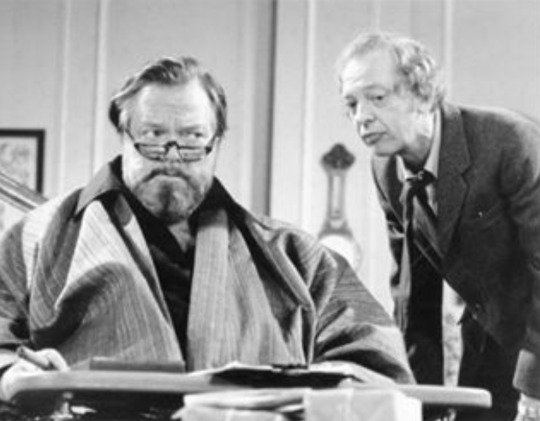
On October 13, 1954, a 60-minute adaptation was aired on the CBS Television series “The Best of Broadway.” A “Hallmark Hall of Fame” production was broadcast n November 29, 1972 starring Orson Welles, Lee Remick (Maggie Cutler), Joan Collins (Lorraine Sheldon), Don Knotts (Dr. Bradley), and Marty Feldman (Banjo). The 2000 Broadway revival was broadcast by PBS on October 7, 2000, three days after the New York production closed, and was also released on DVD.
Synopsis ~ The story is set in the small town of Mesalia, Ohio in the weeks leading to Christmas in the late 1930s. The outlandish radio wit Sheridan Whiteside is invited to dine at the house of the well-to-do factory owner Ernest Stanley and his family. But before Whiteside can enter the house, he slips on a patch of ice outside the Stanleys' front door and injures his hip. Confined to the Stanleys' home in a wheelchair, Whiteside and his retinue of show business friends turn the Stanley home upside down! But is he really injured?
This adaptation was written by S.H. Barnett. The characters eliminated for this adaptation include Richard Stanley, John, Mrs. Dexter, and Mrs. McCutcheon.
The show is hosted by William Keighley, who directed the 1942 film adaptation.
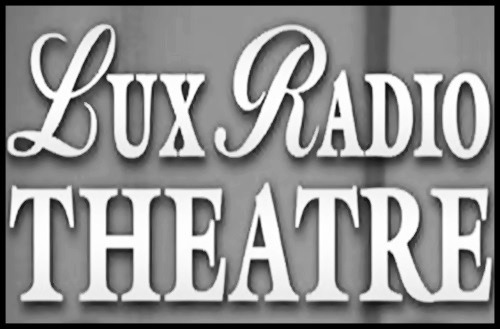
Lux Radio Theatre (1935-55) was a radio anthology series that adapted Broadway plays during its first two seasons before it began adapting films (”Lux Presents Hollywood”). These hour-long radio programs were performed live before studio audiences in Los Angeles. The series became the most popular dramatic anthology series on radio, broadcast for more than 20 years and continued on television as the Lux Video Theatre through most of the 1950s. The primary sponsor of the show was Unilever through its Lux Soap brand.
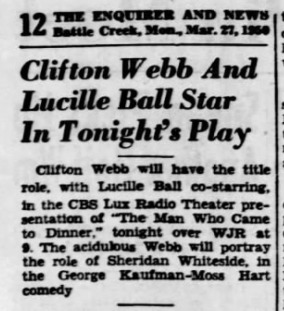
CAST
Lucille Ball (Maggie Cutler) was born on August 6, 1911 in Jamestown, New York. She began her screen career in 1933 and was known in Hollywood as ‘Queen of the B’s’ due to her many appearances in ‘B’ movies. “My Favorite Husband” eventually led to the creation of “I Love Lucy,” a television situation comedy in which she co-starred with her real-life husband, Latin bandleader Desi Arnaz. The program was phenomenally successful, allowing the couple to purchase what was once RKO Studios, re-naming it Desilu. When the show ended in 1960 (in an hour-long format known as “The Lucy-Desi Comedy Hour”) so did Lucy and Desi’s marriage. In 1962, hoping to keep Desilu financially solvent, Lucy returned to the sitcom format with “The Lucy Show,” which lasted six seasons. She followed that with a similar sitcom “Here’s Lucy” co-starring with her real-life children, Lucie and Desi Jr., as well as Gale Gordon, who had joined the cast of “The Lucy Show” during season two. Before her death in 1989, Lucy made one more attempt at a sitcom with “Life With Lucy,” also with Gordon.
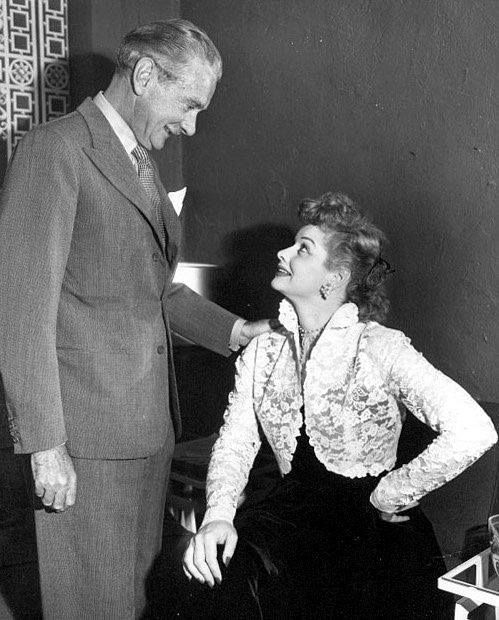
Clifton Webb (Sheridan Whiteside) had appeared with Lucille Ball in the 1946 film The Dark Corner. He was nominated for three Oscars. Webb had played the role of Sheridan Whiteside on stage for two years.
Eleanor Audley (Mrs. Stanley) appeared in several episodes of Lucille Ball’s “My Favorite Husband” as mother-in-law Letitia Cooper. Audley was first seen with Lucille Ball as Mrs. Spaulding, the first owner of the Ricardo’s Westport home in “Lucy Wants to Move to the Country” (ILL S6;E15). She returned to play one of the garden club judges in “Lucy Raises Tulips” (ILL S6;E26). Audley appeared one last time with Lucille Ball in a “Lucy Saves Milton Berle” (TLS S4;E13) in 1965.
Ruth Perrott (Sarah) played Katie the maid on Lucille Ball’s radio show “My Favorite Husband.” On “I Love Lucy” she played Mrs. Pomerantz in “Pioneer Women” (ILL S1;E25), was one of the member of the Wednesday Afternoon Fine Arts League in “Lucy and Ethel Buy the Same Dress” (ILL S3;E3), and played a nurse when “Lucy Goes to the Hospital” (ILL S2;E16).
Betty Lou Gerson is best remembered as the voice of Cruella De Ville in the original Disney film One Hundred and One Dalmatians (1961).
Stephen Dunn had appeared with Lucille Ball in Miss Grant Takes Richmond (1949).
John Milton Kennedy (Announcer)
‘DINNER’ TRIVIA

The same date as this radio adaptation (March 27, 1950), original star Monty Wooley arrived in Vancouver to perform in the play.

This broadcast aired the day after the “My Favorite Husband” episode “Liz’s Radio Script” also starring Lucille and Ruth Perrott.

Lucille Ball’s good friend and frequent co-star Mary Wickes was typecast as a nurse due to her breakthrough role as Nurse Preen in the Broadway, film, and television versions of The Man Who Came To Dinner.’ She does not play Nurse Preen in this adaptation. The character is given the first name Geraldine.

Lucille Ball previously appeared on “Lux Radio Theatre” for a November 10, 1947 adaptation of her film The Dark Corner (1946).

The first commercial talks about how Lux soap is gentle on stockings, like those worn by Betty Grable in Wabash Avenue.

The second commercial (between acts two and three) interviews actress Joan Miller, talking about the Warners picture Stage Fright, and how Lux helped keep the costumes looking great.
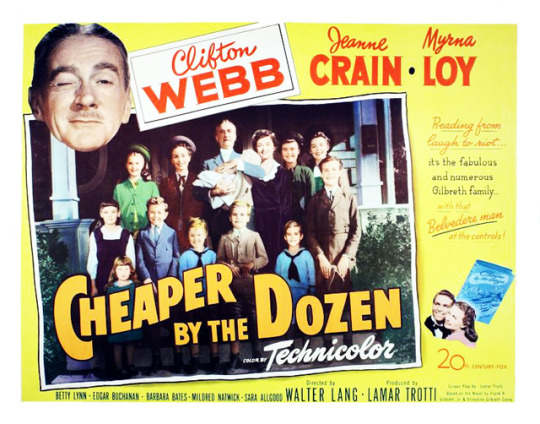
In the post show interviews, Clifton Webb promotes his next film Cheaper By The Dozen.
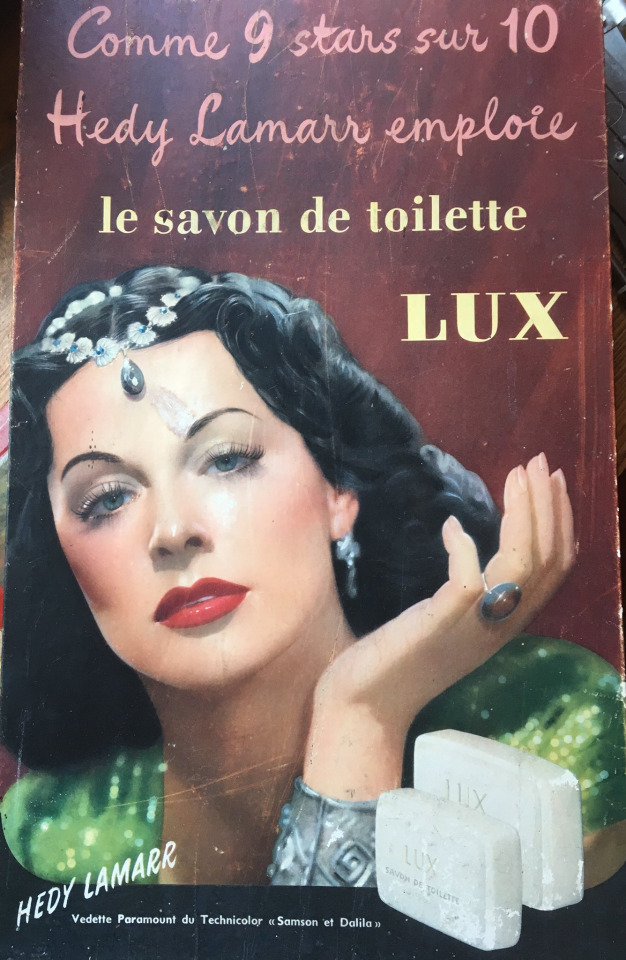
The final Lux commercial talks about how movie star Hedy Lamarr uses Lux.

The program presents a special address from president of the Red Cross, General George C. Marshall. The American Red Cross was mentioned on “My Favorite Husband” and Red Cross posters were frequently scene decorating the sets on “I Love Lucy.”

The ending of radio’s “My Favorite Husband” episode “Mother-in-Law” (November 4, 1949) starring Lucille Ball is identical to the ending of The Man Who Came To Dinner.
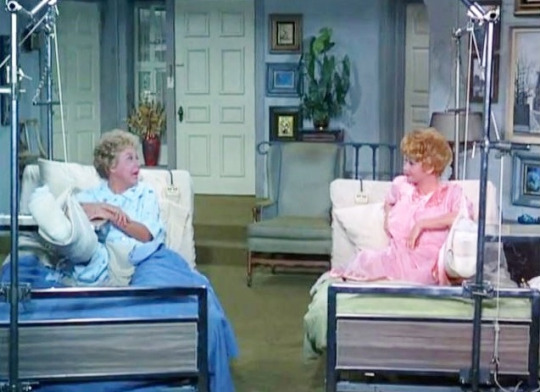
In “Lucy and Viv Reminisce” (TLS S6;E16) on January 1, 1968, while nursing Lucy, who has a broken leg, Viv slips and also breaks her leg. She says she feels just like a female version of The Man Who Came To Dinner.
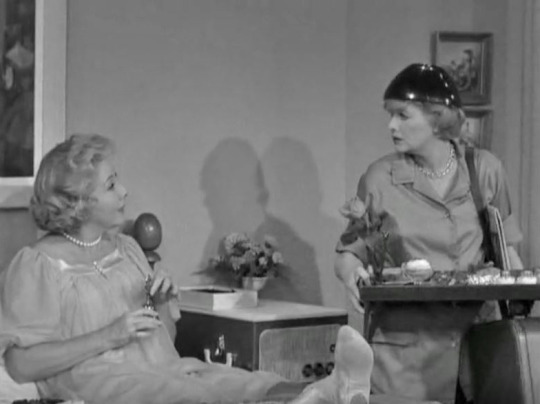
“Vivian Sues Lucy” (TLS S1;E10) on December 3, 1962 also has a plot that resembles The Man Who Came To Dinner. Viv injures herself due to Lucy’s careless housekeeping, and is bedridden. Lucy goes out of her way to cater to her every whim, so that she won’t sue!
Although the play is fictional, it draws on real life figures and events for its inspiration.
Sheridan Whiteside was modeled on Alexander Woollcott.
Beverly Carlton was modeled on Noël Coward.
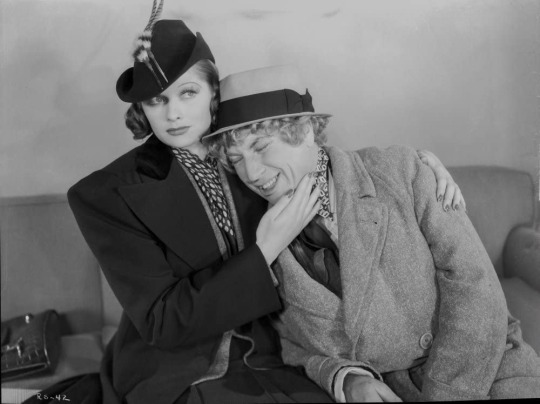
Banjo was modeled on Harpo Marx, and there is a dialogue reference to his brothers Groucho and Chico. When Sheridan Whiteside talks to Banjo on the phone, he asks him, "How are Wackko and Sloppo?"
Professor Metz was based on Dr. Gustav Eckstein of Cincinnati (with cockroaches substituted for canaries), and Lorraine Sheldon was modeled after Gertrude Lawrence.
The character of Harriet Sedley, the alias of Harriet Stanley, is an homage to Lizzie Borden. The popular jump-rope rhyme immortalizing Borden is parodied in the play.

Radio critic Dick Diespecker was not exactly enthusiastic about this adaptation.
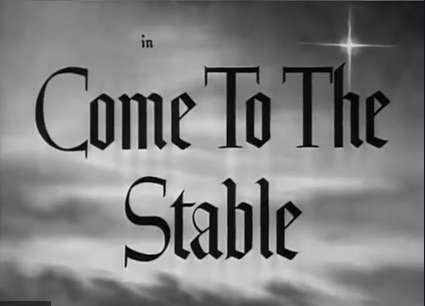
The announcer reminds viewers that next week “Lux Radio Theatre” will present “Come To the Stable” starring Loretta Young and Hugh Marlowe

The announcer promotes Lucille Ball’s new picture Fancy Pants starring Bob Hope.
#Lucille Ball#The Man Who Came To Dinner#Clifton Webb#Eleanor Audley#My Favorite Husband#Ruth Perrott#Red Cross#Betty Lou Gerson#Hedy Lamarr#Betty Grable#Kaufman and Hart#Fancy Pants#Lux Radio Theatre#Lux#William Keighley
7 notes
·
View notes
Text
[ad_1] The NBA commerce market has slowed considerably in current weeks, and one important issue could also be guilty for the relative lack of motion.Regardless of the perceived availability of stars like Donovan Mitchell and Kevin Durant, no main commerce seems to be shut wherever throughout the NBA. That is largely as a result of Minnesota Timberwolves’ acquisition of Rudy Gobert, in line with Fred Katz of The Athletic. Minnesota’s choice to commerce three unprotected first-round picks, in addition to one other with high 5 protections, to amass Gobert from the Utah Jazz has modified the commerce market. Costs for the likes of Mitchell and Durant are so inflated that groups are unwilling to match them. Gobert is considered an elite defender, however will not be a giant offensive menace. Mitchell and Durant are franchise cornerstones and will theoretically command greater than Gobert. The issue is that few groups may even afford to surrender greater than Minnesota did for Gobert, and would battle to place collectively a aggressive crew round every star in the event that they did make such a transfer.The Utah-Minnesota commerce has reportedly been an enormous supply of frustration for GMs across the league. It basically broke the commerce market, and there could also be no solution to reset it this offseason. (function(d, s, id) var js, fjs = d.getElementsByTagName(s)[0]; if (d.getElementById(id)) return; js = d.createElement(s); js.id = id; js.src = "//connect.facebook.net/en_US/sdk.js#xfbml=1&version=v2.5&appId=125075807517358"; fjs.parentNode.insertBefore(js, fjs); (document, 'script', 'facebook-jssdk')); [ad_2] Source link
0 notes
Text
Last update of the year

(A lot of you have already probably seen this picture but it's relevant so here it goes.)
Hello everyone, and Merry Christmas! This week update will be public for everyone and will be the last until after the holidays. The team and I will be out some time so I'll see you all in 2019.
I'll start with the obligatory: thanks everyone for your support during 2018. It's been really important for me, even more considering the huge jump this project was from One Thousand Lies. I've made tons of mistakes and I'll probably keep doing them due to my inexperience, and despite that you have been keeping your trust in me and that has a value I cannot put into words.
I technically finished writing this project at the end of 2017, although I didn't finish writing all the secondary events until around March of 2018. I started looking for artists and musicians at the end of 2017 too although we technically didn't really start until 2018. So in a sense 2018 has been a full year of development, also translated as "me trying to figure out how making video games work".
I went from my original idea of making it in Renpy to move to Unity, then figure out how Unity works during the few first months. During this time I also had the help of a few programmers, musicians, graphic designer and other people that due to different circumstances had to drop from the project, so you can say that these were a few months dedicated exclusively to try to get a properly organized team and work ethic.
For example: here's a look of the game IN MARCH!

I was using placeholders for everything except the background as you can see, but at least the basic functionalities were all there.
My focus a bit after went into keep scripting the first versions of the novel even if they were with placeholders and looking ugly, while at the same time I started the battle programming around May. Well technically I started it before that but I had to discard a few versions until I finally started the base of the current game. This is how it looked back then:

As development went new ideas for the battle system kept coming, and I kept discarding them to, funny enough, leave a design a lot closer to my original idea. The current version is almost 1:1 to my first design documents I did about it.
The hardest part of the battle system was no doubt the AI. This is a system where all units move around with a certain degree of intelligence and there are many situations you never plan ahead where they end doing whatever they want. Luckily I found help from a new programmer that helped me to fix many of the issues and improve the system to what it is now. Once that was working I expected that the rest would be "easy" but the truth is that going from what you see on the gif to what it is now there's a huge amount of work in GUI design and programming and functionality too. The first version had too many buttons around to decide everything your character could do but I managed to come out with a new design simplifying the system and making it a lot more intuitive.
We didn't really start this change in GUI and design until the AI and all attacks and abilities were working, which it was around September! So yes it took 5 months or so of many mistakes and work until we finally managed to get the battle system. As I mentioned before it is a complete new system made from scratch so there was a lot of trial and error. In fact I am still finding errors and minor changes to do.
Here's for example how the AI Behaviour Tree looked for one of your own characters in September when we were still trying trying to make it work properly and it was an mess.
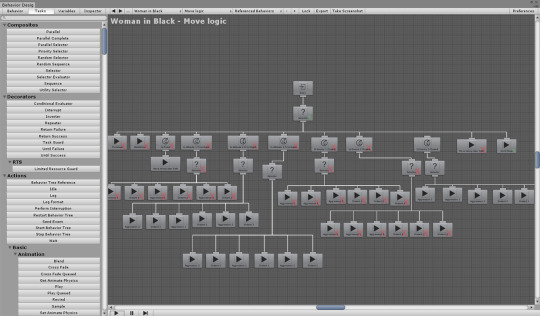
Sincerely the battle system has been a huge idea that has become bigger than I never expected, but at the same time I think it has a lot of potential and really fits with the game. I designed the basics of this system before I even started writing, it's part of the game even if I allow you to make it optional. The costs and time dedicated to it won't probably come compensated once the game releases, but it is still the biggest project I've ever tried in my entire life. I want to make sure that I can be proud of it.
It's been a lot of work and it never seems to end to be honest, but I guess that's part of the first time developers feeling. I only did one other project before and it had little to now programming involved so you can imagine.

The image on top is what you can guess, a screenshot of the demo main menu. During these past few days I had a build ready and getting tested by a few people, and I wanted to release it today but... I'm not really happy with the quality of it.
I feel bad because I keep giving dates but I'm being unable to fulfill them. This is only and exclusively my own incompetence, so I don't want this text come out as excuses. Explanations are still in order however.
My main issue is with the battle system balance, of course some people managed to find ways to beat the map in like 2 turns haha. I made it relatively easy considering it is a demo map but that was a bit too much. There's also a few minor bugs like part of one menu not disappearing if you press certain buttons (how? I don't even) among other things.
So if you really want to play I can build a version with only the Visual Novel part or even upload a video so it's easier to watch, but I personally want to polish it a bit more. I think that first impressions are important too and considering I've messed up almost every announcement and first impression up to now I would like to clean that record.
It's been one year, so I was kinda pressuring myself and other to step up, more than I can probably manage.
Anyways that's all for this year. Hope you enjoyed a bit at least this short look at the game development process during 2018. There's a lot more I could talk about but this entry is already pretty long!
See you in 2019!
ESPAÑOL

(Muchos ya habréis visto esta ilustración antes pero es relevante así que welp)
Hola a todos y feliz navidad. La actualización de esta semana estará abierta al público y será la última hasta después de las fiestas. Tanto el equipo como un servior vamos a estar fuera por lo que ya nos veremos en 2019.
Empezaré con el obligatorio: muchas gracias a todos por vuestro apoyo en 2018. Ha sido un año muy importante para mí, aún más considerando el salto desde un proyecto como One Thousand Lies a esto. He cometido todos los fallos que podía cometer y probablemente los siga cometiendo debido a mi falta de experiencia, pero a pesar de todo muchos me habéis seguido apoyando y eso tiene un valor que no puedo poner en palabras.
Técnicamente terminé de escribir este proyecto a finales de 2017, aunque estuve luego trabajando en todo el contenido secundario hasta Marzo de 2018 o así. A finales de 2017 también fue cuando comencé a buscar artistas y músicos por lo que realmente no empezamos hasta 2018. En ese sentido 2018 ha sido un año completo dedicado al desarrollo, que se puede traducir también como "yo intentando averiguar cómo hacer eso de los videojuegos funciona".
Al comienzo fui de mi idea original de usar Renpy a finalmente cambiar por Unity. Durante estos primeros meses todo lo que podía hacer era intentar averiguar cómo Unity funciona ya que ha sido mi primera experiencia con el mismo. Durante este tiempo tuve también el apoyo de unos cuantos programadores, músicos y diseñador gráfico entre otros, pero debido a diferentes circustancias tuvieron que dejar el proyecto. Al final estos primeros meses realmente fueron para intentar formar el equipo y averiguar qué teníamos que hacer.
Por ejemplo, aquí tenemos un vistazo a cómo el juego se veía en Marzo:

Estuve utilizando placeholders para todo excepto el fondo como se puede ver, pero al menos las bases de funcionalidad estaban ahí ya.
A partir de ahí me centré en pasar las primeras escenas al juego aunque fueran llenas de estos placeholders y teniendo una pinta horrenda a la par que me familiarizaba con el motor. Poco después también comencé a programar el sistema de combate, en torno a Mayo para ser exactos. Bueno en realidad comencé antes de eso pero fueron todos versiones que deseché hasta que finalmente comencé lo que sería la base de la versión actual. Este es el aspecto que tenía por aquel entonces:

Lo curioso es que conforme el desarrollo avanzaba nuevas ideas para el sistema de combate seguían surgiendo, pero a la vez las iba desechando. Al final el diseño actual es casi un calco exacto de mi primer diseño documentado sobre el sistema de combate y todas esas pruebas acabaron fuera.
La parte más difícil de todo este sistema es sin lugar a dudas la IA. Este es un sistema donde todas las unidades se mueven con un cierto grado de inteligencia y hay unas cuantas situaciones en las que al final acaban haciendo un poco lo que les daba la gana. Por suerte encontré ayuda de un nuevo programador que arregló y mejoró mucho de mis problemas para dejarlo en lo que tenemos ahora. Con eso terminado esperaba que el resto fuera a ser fácil pero lo cierto es que ir desde lo que ves en el gif a lo que tenemos ahora fue una cantidad ingente de trabajo. La primera versión tenía muchos botones también por lo que también había que intentar diseñar un sistema simplificado y mucho más intuitivo.
Todo este trabajo respecto al GUI y el diseño no se comenzó hasta que la IA y todos los ataques y habilidades estaban completos, que no ocurrió hasta Septiembre o así. Por lo que sí, llevó 5 meses de muchos fallos y trabajo hasta que finalmente se completó el sistema de combate. Como ya he mencionado antes es un sistema completamente nuevo al fin y al cabo y hecho de cero por lo que hubo mucha prueba y error. De hecho todavía sigo encontrando pequeñas cosas constantemente.
Aquí por ejemplo hay una captura de cómo el árbol de comportamiento de la IA para uno de los personajes se veía en Septiembre, cuando todavía se estaba intentando hacer que funcionase y era todo un poco lío.

Siendo sinceros el sistema de combate ha sido una idea enorme que se ha vuelto incluso más grande de lo que nunca imaginé. Al mismo tiempo sin embargo creo que es algo con un enorme potencial y que realmente encaja con el juego para crear algo único y novedoso. Diseñé todo esto antes incluso de empezar a escribir, es parte del juego incluso si permito que sea opcional. Los costes y el tiempo dedicado probablemente no compensarán lo que luego el juego gane, pero sigue siendo el proyecto más grande que he hecho en mi vida y al menos me aseguraré de que pueda estar orgulloso de él.
Es un montón de trabajo que no parece acabar nunca, pero supongo que es lo que hay cuando haces un juego por primera vez. Solo he hecho otro proyecto antes y no tenía casi nada de programación por lo que te puedes hacer una idea.
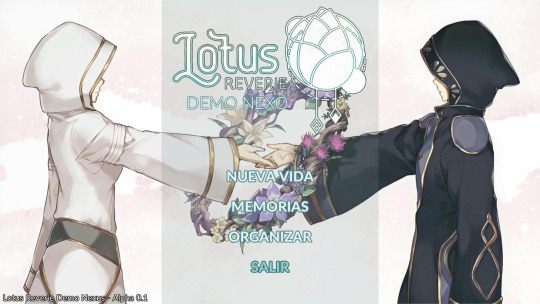
La imagen de arriba es lo que ya os podéis imaginar, una captura del menú principal de la demo. Durante estos últimos días conseguí finalmente tener un build listo y una cuanta gente jugándolo. Mi idea era sacarlo hoy pero... no estoy muy feliz con la calidad del mismo.
Me siento mal porque sigo dando fechas que no puedo cumplir. Esto se debe exclusivamente por mi incompetencia por lo que no quiero que suene a que pongo excusas, pero obviamente tengo que dar explicaciones.
El mayor problema viene con el balance del combate. Por supuesto ha habido gente capaz de completar el mapa en 2 turnos je. Lo he hecho relativamente fácil considerando que es una demo pero igual es demasiado fácil. Además sigue habiendo unos cuantos errores como por ejemplo unos botones del menú que no desaparecen si usas ciertos botones (¿cómo? Ni idea) entre otras cosas.
Por lo que si realmente queréis jugar no me importa daros un versión con solo la parte de novela visual o incluso subir un vídeo para que sea más fácil de ver, aunque personalmente preferiría poder mejorarlo un poco más. Creo que las primeras impresiones son importantes y considerando cómo la he liado con todos los anuncios del juego pues quiero limpiar mis propios errores.
Ha sido un año, por lo que igual he estado presionando al equipo y a mí mismo demasiado, más de lo que realmente puedo hacer.
En cualquier caso eso es todo lo que he podido hacer durante este 2018. Espero que hayáis disfrutado al menos de este pequeño vistazo al proceso de desarrollo este año. Hay mucho más de lo que podría hablar pero esta entrada ya es muy enorme, ¿no te parece?
¡Nos vemos en 2019!
#visual novel#update#novela visual#vndev#gamedev#dev#games#game dev#game development#videojuegos#juegos#video game#indie#utage#unity#pc#mobile#android#iOS#original character#mystery#comedy#slice of life#survival#lotus reverie
1 note
·
View note
Text
NBA 75 team: Full list of players revealed as league celebrates 75th anniversary season

Get ready to embrace debate, folks. The NBA 75 list is here.
As part of its 75th anniversary celebration, the league will be releasing a list featuring the 75 greatest players in NBA history during the first week of the 2021-22 season. A similar list was compiled ahead of the 1996-97 season to honor the 50 greatest players of all time, but given the amount of talent that has come through the league since then, it’s possible a few players from the original top 50 will lose their spots.
TOP 75 PEAKS IN NBA HISTORY: 75-51 | 50-26 | 25-11 | 10-1
Who do YOU think will be selected to the 75th Anniversary Team?
75 Greatest Players will be announced on TNT’s NBA Tip-Off and ESPN’s NBA Today starting tonight at 6pm/et through Thursday.
25 members of the team will be announced on each of the three days. #NBA75 pic.twitter.com/HLeeV4Bkrk
— NBA (@NBA) October 19, 2021
Which legends of the game will land on the list? Which players will earn the “snub” label? The Sporting News will update the NBA 75 list below as the names are announced.
NBA 75 team: Full list of players revealed
(Note: These are not rankings. Nos. 26-50 will be revealed on Wednesday, and Nos. 51-75 will be revealed on Thursday. )
1. Hal Greer
2. Dirk Nowitzki
3. Bob Pettit
4. Oscar Robertson
5. Bill Russell
6. Giannis Antetokounmpo
7. Kevin Durant
8. Elvin Hayes
9. Jerry Lucas
10. Willis Reed
11. Nate Archibald
12. Bob Cousy
13. Dave Cowens
14. James Harden
15. Hakeem Olajuwon
16.
17.
18.
19.
20.
21.
22.
23.
24.
25.
When will the NBA 75 list be unveiled?
The NBA 75th anniversary team will be unveiled in three parts during the first week of the 2021-22 season.
First 25 players revealed: Tuesday, Oct. 19 (6 p.m. ET, TNT)
Next 25 players revealed: Wednesday, Oct. 20 (3 p.m. ET, ESPN)
Last 25 players revealed: Thursday, Oct. 21 (6 p.m. ET, TNT)
Who votes on the NBA 75 list?
The NBA 75th anniversary team was selected by a panel of media members, current and former players, coaches and team executives. The league has not yet announced if it will share voting results or if it presented specific guidelines that each voter was required to follow. The process seems largely subjective.
How will the NBA celebrate its 75th anniversary season?
There will be several dates on the 2021-22 season schedule featuring classic matchups, including a Nov. 1 contest between the Knicks and Raptors that will take place on the 75th anniversary of the NBA’s first regular-season game. The league will also introduce a special 75th anniversary season logo as well as new Classic and City Edition uniforms.
Hall of Famers Clyde Drexler, Magic Johnson, Bob Pettit and Oscar Robertson as well as 14-time All-Star Dirk Nowitzki will serve as ambassadors throughout the season. Given that they will have a significant presence at league events, including 2022 All-Star weekend in Cleveland, it feels safe to assume that they made the NBA 75 list.
youtube
!function(f,b,e,v,n,t,s) {if(f.fbq)return;n=f.fbq=function(){n.callMethod? n.callMethod.apply(n,arguments):n.queue.push(arguments)}; if(!f._fbq)f._fbq=n;n.push=n;n.loaded=!0;n.version='2.0'; n.queue=[];t=b.createElement(e);t.async=!0; t.src=v;s=b.getElementsByTagName(e)[0]; s.parentNode.insertBefore(t,s)}(window,document,'script', 'https://connect.facebook.net/en_US/fbevents.js'); fbq('init', 235247967118144); fbq('track', 'PageView'); Source link
from WordPress https://ift.tt/2Zb2Omr via IFTTT
0 notes
Text
Panels Far, Far Away: A Week in Star Wars Comics 8/15/18

Devoid of catastrophic space battles, angry Sith Lords, and duplicitous archaeologists, Marvel’s Star Wars comics this week prove to be a decidedly middling batch as Poe Dameron moves closer to the finish line and Woody Harrelson’s space cowboy gets a prequel of his own.
Star Wars: Beckett #1 written by Gerry Duggan and art by Edgar Salazar, Marc Laming, and Will Sliney

In a movie filled with characters that gray moral lines and often feel murkier than intended, few accomplish this more so in Solo: A Star Wars Story than Woody Harrelson’s Tobias Beckett and his crew. While Harrelson played Beckett with a down to Earth realism and cynicism that made him a smart mentor figure and eventual foil to Han, his relationship to his two partners Val, played by Westworld’s Thandie Newton, and Rio Durant was more than a bit vague especially considering some of the events of the film. The decision to make a prequel comic further fleshing out Tobias’s relationship with his partners and his place in the Star Wars underworld seems like a no-brainer, but the results, while entertaining, fail to make much of an impression.
The presentation of Beckett is stellar and a testament to the editorial team. The book is laid out like an Old West wanted poster with the narrative split into three different chapters deriving their names from famous Western tropes and titles. It gives the comic itself a unique feel.
The art is also equally impressive, especially given that each chapter is drawn by a different creator behind the pencils. Edgar Salazar, Marc Laming, and Will Sliney’s creative styles blend together well and the use of a single colorist, Jordan Boyd, helps to create a fluid sense of continuity between all three portions.
Gerry Duggan, perhaps best known for his work on Deadpool and Guardians of the Galaxy, crafts a script that follows Beckett and his team across the span of a single, twisty job for their mysterious overlord, Dryden Vos. The result is frequently entertaining, and Duggan has an eye for light and playful dialogue and staging various shootouts and stand offs. However, we don’t really gain much more of an understanding about Beckett’s character here, and his personality at times seems a bit more optimistic and goofy than the hardened scoundrel we met in Solo. One can’t but wish that we had been granted a moodier, tenser, and more classically Western yarn that the presentation seemed to be guiding us to.
Score: B-
Star Wars: Poe Dameron #30 written by Charles Soule and art by Angel Unzueta

It’s hard to believe that after all this time we have reached the penultimate issue of Poe Dameron. While it has had its ups and downs, at its best Charles Soule’s sequel era ongoing played like a fun and creative successor to classic Dark Horse books like Rogue Squadron. It’s good to see then that the series seems to be righting itself after several issues of wheel spinning and unnecessary plot hole filling to tell a tense ensemble driven story that may close out the series on a more tragic note than we expected.
While the frame narrative in past issues was often fun and diverting in its exploration of a post-The Last Jedi ensemble, it often felt like an unnecessary addition to a story that at its core wanted to explore an untold, and perhaps final, chapter for its expansive ensemble. Here Soule uses this as a smart way to ramp up tension. Having Poe listen to Jessika Pava’s post-mission recordings of a job gone wrong adds an ominous air to the issue’s events before concluding with an unexpected gut punch. It turns what could have been a routine conflict between Black Squadron and a First Order onslaught into what may be a deadly last stand and it makes for a more engaging comic as a result.
One can’t help but wish that Soule had taken the time to introduce this as a narrative device earlier. This story of an outgunned Black Squadron trying to save a planet in distress against incredible odds would have made for a much more engaging arc than seeing the events of The Force Awakens told again or the strange one-off of last installment.
Unzueta’s art manages to capture the tense battle sequences well and his dogfights pop with as strong a visual flair as ever.
With one issue left in Poe Dameron, for the first time, the series leaves us with a genuine question as to the fate of its ensemble cast. While I wouldn’t guess that Soule would end a series like this on such a dark note, this is the guy writing Darth Vader right now after all. Darkness is in his nature.
Score: B+
#Star Wars#Marvel#Star Wars Comics#review#reviews#Poe Dameron#Tobias Beckett#Charles Soule#Angel Unzueta#Solo#Solo: A Star Wars Story#Edgar Salazar#marc laming#Will Sliney
1 note
·
View note
Text
MAGA Ye Gives Back: Kanye West Donating DONDA Listening Party Tickets to HBCUs
Source: Neil Mockford / Getty
Ahead of the release of his highly anticipated new album, Kanye West is making sure that his fans at HBCUs will be able to tune in.
The rapper/producer has been hard at work on Donda, his latest album which is now slated to be released this coming Friday (July 23rd). In his usual grandiose fashion, West is throwing a listening party at the Mercedes-Benz Stadium in Atlanta, Georgia this Thursday (July 22nd) at 8 P.M. and he’s donated 5,000 of those tickets to faculty members, staff and students of area HBCUs Clark Atlanta University, Morehouse College, Morehouse School of Medicine, Spelman College, Morris Brown College and ITC.
This event is the latest listening party for Donda, which was to have been released last year but was shelved for more work. The album named for Kanye’s late mother, Donda West, was first previewed to an invite-only crowd that included Brooklyn Nets star Kevin Durant and web personality Justin Laboy in Las Vegas, Nevada over the past weekend. Laboy’s comments about the album drove anticipation to a fever pitch online. A track from Donda was also the backdrop for a new commercial from Beats that featured sprinter Sha’Carri Richardson that aired during Game 6 of the NBA Finals.
Kanye played his new album for me & @KDTrey5 last night in Vegas. Man listen! The production is light years ahead of it’s time, and the bars sound like he’s broke & hungry trying to get signed again. Any artist who plan on dropping soon should just push it back

#Respectfully
— Respectfully Justin (@JustinLaboy) July 18, 2021
The ticket donations to these colleges is the latest move by Kanye West to involve HBCUs despite his recent right-wing affiliations with former president Donald J. Trump and Candace Owens. The last event was in October 2019, when the rapper brought his “Sunday Service” series to Howard University’s Homecoming festivities. Another of West’s philanthropic moves that benefited HBCUs that month occurred when a financial gift to Pastor Jamal Bryant’s New Birth Missionary Baptist Church was redirected to create a scholarship in his late mother’s name at Morris Brown College.
window.addEventListener(‘interaction’, function () { setTimeout(function () { var s = document.createElement(‘script’), el = document.getElementsByTagName(‘script’)[ 0 ]; s.async = true; s.src = ‘https://platform.twitter.com/widgets.js’; el.parentNode.insertBefore(s, el); }, 1000) });
source https://hiphopwired.com/997067/kanye-west-gives-donda-listening-party-tickets-to-hbcus/
from Young And Hungry Entertainment https://ift.tt/3eHxTTq via Young And Hungry Ent. source http://feedproxy.google.com/~r/yahblogger/~3/35OUYt0Mtrw/maga-ye-gives-back-kanye-west-donating.html
0 notes
Photo

“A big secret is going to be revealed upon the Durants! Can you make Launce try to talk to Hunter to end the feud once and for -- wait WHAT?!”
#arkhelios#arkhelios scripted events#durant#durant scripted events#launce durant#hunter bellamy#omar bellamy#tabitha durant
13 notes
·
View notes
Photo

NOTE: The following contains full spoilers.
Solo (2018)
Officially entitled Solo: A Star Wars Story, Solo is the second Star Wars anthology film to be released by the Walt Disney Company after their acquisition of Lucasfilm. It is an origin story for the character of Han Solo – who has been played by Harrison Ford until now. The Star Wars franchise is increasingly being treated like the Marvel Cinematic Universe (MCU) with its release dates planned years in advance, short and rigid production schedules for astronomically-budgeted movies, the studio’s growing dependence on these franchise films for profits at the expense of smaller projects, and the interconnectedness with other corners of the franchise. Yet I admit a bias: Star Wars – and Solo, by extension – has already proven its cinematic legacy (which is mostly distinct from popularity); I predict the verdict on the MCU will be quite unkind in several decades. Thus, I can tolerate the frequency of Star Wars films for now. But my patience here is not unconditional.
A rollicking space Western adventure picture, Solo is not without sizeable weaknesses – potentially exacerbated by the fact that the last Star Wars film was released less than a half-year ago and that Ron Howard had to replace co-directors Phil Lord and Christopher Miller (the Jump Street series, 2014′s The Lego Movie) late into principal photography. Lord and Miller were dismissed by producer Kathleen Kennedy (president of Lucasfilm and co-founder of Amblin Entertainment) after creative differences with co-writer Lawrence Kasdan (1980′s The Empire Strikes Back, 2015′s The Force Awakens). Hiring the capable Howard steadies the film, even if it means this is the one Star Wars film that takes the least amount of artistic risk.
Beginning thirteen years before the events of Star Wars (1977), Han (Alden Ehrenreich; who plays the role with some youthful hesitation appropriate to this version of the character) and lover Qi’ra (Emilia Clarke) are attempting to escape their home planet of Corellia. They are separated in their escape attempt, and he promises to find her again by joining the Imperial Navy. Three years later, Han has been expelled from the Imperial Flight Academy and find himself an infantry grunt. Here, he befriends the Wookiee Chewbacca (Joonas Suotamo) encounters a band of criminals posing as Imperial soldiers who are interested in a shipment of coaxium (a substance that enables faster-than-light travel): leader Tobias Beckett (Woody Harrelson), his partner Val (Thandie Newton), and Rio Durant (voiced by Jon Favreau). Fleeing from the Imperial Army, Beckett’s gang attempts a train heist, only to be fatally thwarted by another criminal gang – the Cloud Riders, led by Enfys Nest (Erin Kellyman). Afterwards, Han and Chewie will follow Beckett to see Dryden Vos (Paul Bettany) – who masterminded the operation. Vos requests another heist, but not before Han reunites with Qi’ra, who has become Vos’ assistant.
There is also the matter of charmer/pilot/smuggler/cheater-cheater-pumpkin-eater Lando Calrissian (Donald Glover), his droid L3-37 (Phoebe Waller-Bridge), and a piece of garbage christened the Millennium Falcon. After nineteen years since The Phantom Menace, Ray Park returns as Darth Maul with Sam Witwer (reprising from Dave Filoni’s two animated Star Wars television series) voicing the character in a late MCU-esque cameo.
The screenplay is co-authored by Lawrence Kasdan and his son, Jonathan (2007′s In the Land of Women, 2012′s The First Time). Before Disney’s purchase of Lucasfilm, the Kasdans had been working with George Lucas on a young Han Solo film since at least 2012. Lawrence had to depart early to finish the script to The Force Awakens, and it is unknown how much of Lucas’ influence is in the final product. Nevertheless, Solo is a movie that is running through a checklist of references it must include. That pair of dice Han Solo keeps on the Millennium Falcon? Yup. Befriending Chewbacca and establishing a complicated relationship with Lando? Of course. Explaining Lando’s fashion sense that would make him a bête noire to Edna Mode? Fashionistas rejoice! The Kessel Run? Oh yes – if the Imagineers at the Disney parks ever decide to include the Kessel Run as a Star Tours option, prepare for the most whiplash-inducing amusement park ride ever! It is the moments in between these scenes – scenes with characters we are less familiar with – that leave the greatest impressions.
Of interest is scene-stealer Tobias Beckett (Harrelson has played roles like this for ages now, and he might give the best performance other than Glover here), who is to Han as Obi-Wan was to Luke Skywalker. For literary types, imagine Long John Silver from Robert Louis Stevenson’s Treasure Island if Long John Silver treated Jim Hawkins more like an adult. Beckett has lived his life looking out for himself, disallowing himself to put complete trust (and, as a result, love) in anyone – including his partner, Val. There are layers upon layers to his personality, to whatever Beckett might show up on a given day to an employer or client. He is not cynical for the sake of being cynical; the least interesting people in the world are cynical for the sake of being cynical. Circumstance and horrible luck has made him the way he is, as he passes along the lessons he has learned to a young kid who is walking down the same hard-nosed path he has chosen.
Compared to most other popular Western media franchises, Star Wars has handled major character deaths with sensitivity – in peace or through trauma, death is shown as disruptive, eventually strengthening, to the consciences of the living. Solo may be the first film in the franchise that does not adhere to any of that. Death is a regular part of life to these outlaws and the deaths of Rio, Val, and L3-37 in the opening and middle third of the film registers no impact. Perhaps their deaths are shocking to some, but we have not learned enough about these characters (even if they were established in other Star Wars media, these moments will not have worked for a general audience) to care. I cannot decide if Val or L3 has the most mishandled death. Where the former’s death should cut Beckett to emotional pieces, it is but a momentary setback to him and the film refuses to more fully explore why his reaction is as cold as it is (trust is a part of love). For the outspoken L3 (and love interest to the recently-established pansexual Lando Calrissian), she has raised points about droid enslavement that Star Wars rarely acknowledges. Her beliefs are treated like miscalculated comedy, with only the droids in the movie taking her seriously. When Lando weeps over L3, the comedic framing of his beloved droid renders the scene either uncomfortable or unintentionally funny. Deaths of major characters should not be funny nor should they leave audiences perhaps even without sympathy. Following Snoke’s shocking, almost decontextualized killing by Kylo Ren in The Last Jedi and the numerous deaths in Solo, Star Wars is in danger of cheapening the value of life. To do so profanes cinema.
Inconsistent performances plague Solo. Ehrenreich, who looks nothing like Harrison Ford nor acts anything like him, is fine in the role – to imitate Ford’s take on the character would only set himself up for failure. The performance is his, although his vocal inflections are too distracting to forgive. Emilia Clarke is no disaster, but her failing performance is scattered. She is unconvincing in the many roles the screenplay is calling her to be: femme fatale in space, lover, ruthless killer, backstabber. Clarke herself claims that she was confused on set because of Lord and Miller’s ineptitude as directors. As that cannot be independently verified, all I can say for now is that Clarke should sack her agent and find some smaller-budget movies to work on. Seriously. Paul Bettany, as Vos, may be the first Star Wars villain that I forgot about hours after seeing the movie. Donald Glover is not in the film long enough to save it from mediocrity (and his Lando is, like Billy Dee Williams’, too reactive a character because of the screenplay), but from what he is able to do his comedic timing and charm is exactly what Solo needs. Glover’s starpower has progressed rapidly in the last several years, and one suspects he is not slowing down soon.
Earlier I mentioned Solo’s lack of artistic risk. Much of that conservative filmmaking comes from not only from Ron Howard, whatever Phil Lord and Christopher Miller contributions remained in the film, the Kasdans, and Kathleen Kennedy, but cinematographer Bradford Young (2014′s Selma, 2016′s Arrival) and editor Pietro Scalia (2000′s Gladiator, 2015′s The Martian). Young’s camera moves too much in quieter moments and he uses close-ups and medium-close shots to excess in both interior and exterior environments – this is Star Wars and this is Bob Iger’s money you are using, so embrace the darn landscapes you are blessed with. Solo feels drained of color and the cameras seem to have brown or black-ish filters applied at the brightest moments, making it the least interesting film in the franchise to look at. For Scalia, the transition from Han and Qi’ra’s separation to trench warfare is baffling. Did the film projectionist make a mistake and put in a reel of an All Quiet on the Western Front (1930) remake with laser guns? Equally poor is Scalia’s handling of Han’s confrontation with Vos and the aftermath. Only twice does Scalia prove himself: the train heist (Young’s most glorious moments) and the Kessel Run (itself a visual effects wonder... now if only Young could stop it with all the close-ups).
John Williams provided the main theme for Han Solo (which contains a noble fanfare dueling with syncopations suggesting his criminal side), but it is Englishman John Powell (his stupendous How to Train Your Dragon scores are some of the best compositions of this decade), who scores the film with a ninety-eight-member orchestra assembled at London’s Abbey Road Studios. Powell will use Williams’ theme quite often, but will add a liberal amount of percussion (an aspect of film scoring from the mid-2000s onward I am not a fan of, but that I accept given this unpolished origin story far from the operatic orchestras of the main Star Wars saga) from the opening moments, setting all this up with “Meet Han”. The score truly shines during the action sequences. “Train Heist” begins during a campfire scene as Han, Chewbacca, and Beckett’s gang reminisce about past adventures and imagine their futures, accompanied by lush string and wind melodies. By 1:30 in the cue, the scene has cut to the heist itself. The percussion sounds like something out of Hans Zimmer’s Remote Control Productions, but the orchestration keeps the action closer to the John Williams tradition. This scene makes way for the Cloud Riders’ arrival – heralded by “Marauders Arrive”. This motif features a thirty-six-voice Bulgarian women’s choir, and according to John Powell, they contributed, “an aggressive, exotic sound... to feel like a different culture had arrived on the scene.” That effect is accomplished wonderfully.
The Kessel Run scene is strengthened by “Reminiscence Therapy”. Despite initial listens, the cue is more than just a regurgitation of two disparate moments from the fourth and fifth episodes. The grinding strings, the pounding percussion, and the occasional rhythmic anarchy that would give anything less than a tested, played-it-all orchestra night terrors combine to throttle the Kessel Run into one of the most exhilarating space pursuits seen in cinema. My second-favorite moment in the score occurs at 2:55 when Chewbacca’s theme is heard as he takes the pilot’s seat of the Millennium Falcon for the first time and, twenty seconds later, Powell transitions to the most shameless quotations of Williams’ Star Wars theme.
Many motifs other than Han’s theme are present throughout the score, including the Han-Qi’ra love theme – most notably in “Lando’s Closet” and “The Good Guy”. Though their romance, like Anakin and Padme’s, might not be convincing, they receive a hell of a motif. Using some chord progressions hinting at the Han-Leia theme (because Han will fall in love again), the theme begins with woodwinds or brass immediately repeated by the strings, and in later iterations (as they realize their romance cannot continue) taken by solo trumpet and harp. Perhaps for many this following statement will not mean much, but permit this classic film buff to wax even more about Powell’s score. The love theme in Solo feels like something Erich Wolfgang Korngold (who scored many 1930s-1940s Warner Bros. swashbucklers featuring Errol Flynn) would have written had he lived to score Star Wars. Korngold may have been an exciting action composer, but his love themes are also stuff of legend – listen to this from The Adventures of Robin Hood (1938). For Powell, he has composed the best film score of the year so far. Star Wars’ tradition of musical mastery continues.
youtube
With eighty percent of the film reshot after the dismissal of Phil Lord and Christopher Miller, Solo is as good as can be expected from such a tortured production history. Adjusted for inflation, the vast amount of reshoots has made it the second-most expensive Star Wars film of all time (behind The Force Awakens) – tied with Wild Wild West (1999) and The Fate of the Furious (2017), and just ahead of the infamous Cleopatra (1963). Where Cleopatra nearly bankrupted 20th Century Fox, something tells me Disney will survive Solo (which has especially tanked in Asian markets where Star Wars is less ingrained into cinematic culture and is disappointing in North America as this review is being written).
Call me a traditionalist (in many ways, I am), but Star Wars movies are cinematic events – nothing else can attract the genuine attention of those who breathe cinema (supposedly, they hate having a good time at the movies) and those who want to go see the movies they want to see (supposedly, they are ignorant of what is good cinema). Solo – in its flawed construction and its ultimate function in the Star Wars franchise – does not feel like an event. It is a fun romp through space that introduces new characters and enriches older ones, but little else. An eighteen-month wait for the ninth episode in the main saga does not seem that long at all anymore.
My rating: 6/10
^ Based on my personal imdb rating. My interpretation of that ratings system can be found here.
#Star Wars#Solo#Ron Howard#Alden Ehrenreich#Woody Harrelson#Emilia Clarke#Donald Glover#Thandie Newton#Phoebe Waller Bridge#Joonas Suotamo#Paul Bettany#Jonathan Kasdan#Lawrence Kasdan#Bradford Young#Pietro Scalia#John Powell#John Williams#Kathleen Kennedy#My Movie Odyssey
1 note
·
View note
Text
HERE COMES THE JUDGE!
Oyez! Oyez! All Rise for the Honorable Jurists of the Lucyverse!

“Lucy the Conclusion Jumper” (1968)
APPROACH THE BENCH

Clarence Wilson played a Judge in one of Lucille Ball’s early films, Blood Money (1933). It was the first of three of his Judge roles.

C. Montague Shaw played the Judge in Jealousy (1934), a film in which Lucille Ball has a bit part. He also played a Judge (not the legal kind) in 1935′s Carnival, also with Ball, as well as eight more screen Judges!

Lucille Ball played a Beautician and Edward LeSaint played a Judge (both uncredited) in Fugitve Lady (1934). Of LeSaint’s more than 325 screen credits, more than 60 were as Judges; nine in 1939 alone. They included the cult classic Reefer Madness (1936) and a film titled A Woman is the Judge (1939).
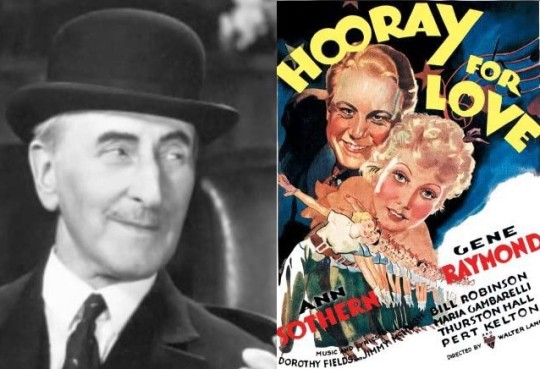
Etienne Giradot played Judge Peterby and Lucille Ball was an uncredited chorine in Hooray for Love (1935). He went on to play Judges in two more films.

Howard Hickman played 28 Judges from 1934 to 1941, including Judge Jonathan Travers in the Lucille Ball film Next Time I Marry (1938).

In 1940, Lucy and Desi’s elopement required two Judges! Probate Judge Harold L. Knapp waived the five-day wait required by Connecticut law, and Justice of the Peace John P. O'Brien performed the ceremony at the Byram River Beagle Club at noon on Saturday, November 30, 1940. Some aspects of the event were fictionalized on “I Love Lucy” in 1952 with Irving Bacon playing Justice of the Peace Mr. Willoughby.
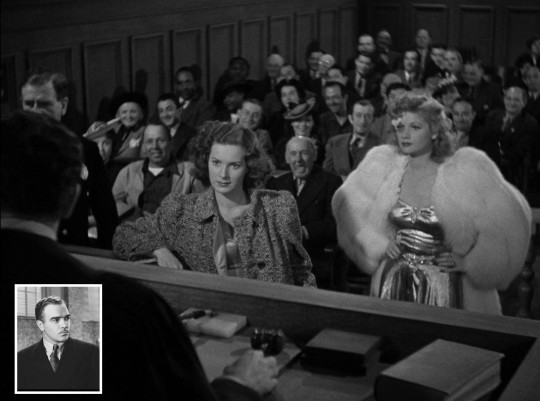
Walter Abel played the Judge in Dance, Girl, Dance (1940). In 1935, he was seen in the film The Three Musketeers with Lucille Ball. Abel also played a Judge in his final television role in 1976.
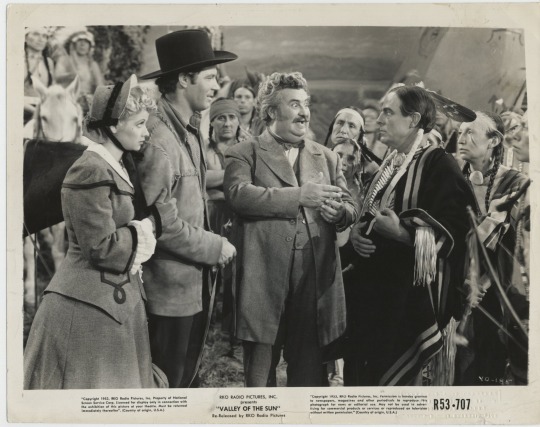
In Valley of the Sun (1942), Lucille Ball played Christine Larson and Billy Gilbert played Judge Homer Burnaby. Gilbert was also seen with Ball in I Dream Too Much (1938) and Joy of Living (1938).
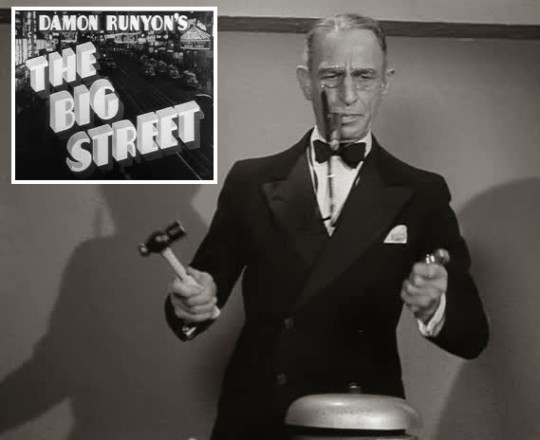
Also in 1942, Ball played the lead in The Big Street in which Julius Tannen played Judge Bamberger. He also played a Judge in The Lady in Question (1940).
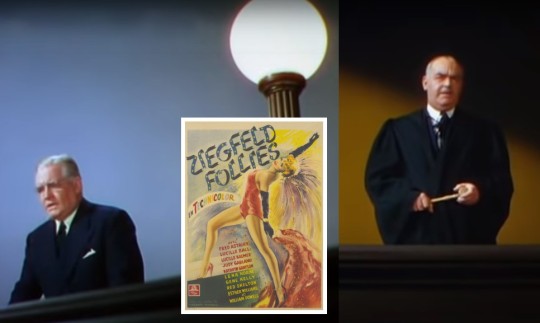
There were two Judges in the Lucille Ball film Ziegfeld Follies (1945), both in the segment titled “Pay the Two Dollars”. Judge #1 was played by Joseph Crehan, who later played the Detective in “The Great Train Robbery,” a 1955 episode of “I Love Lucy.” Of his 382 film and TV credits, more than a dozen were as Judges. Judge #2 was played by William B. Davidson, who was also seen with Ball in Roberta (1944) and Lover Come Back (1946). Coincidentally, Davidson’s final film was titled The Judge Steps Out (1948). He played a Judge in five films. One of his early films was titled Good Morning Judge (1928). The two Ziefeld Follies Judges do not appear in the same segment as Lucille Ball, “Here’s To The Ladies.”
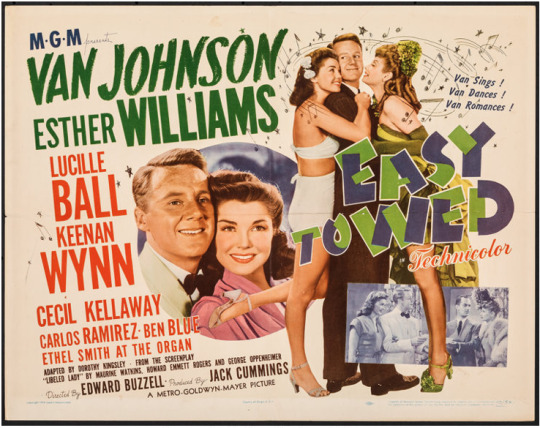
Walter Soldering and Joel Friedkin played Justices of the Peace (a Judge with limited jurisdiction, generally with the ability to perform marriages) in the Lucille Ball / Van Johnson film Easy To Wed (1946). Friedkin played a JOP in three other films and a Judge in eight! Soldering played four JOPs and six Judges.
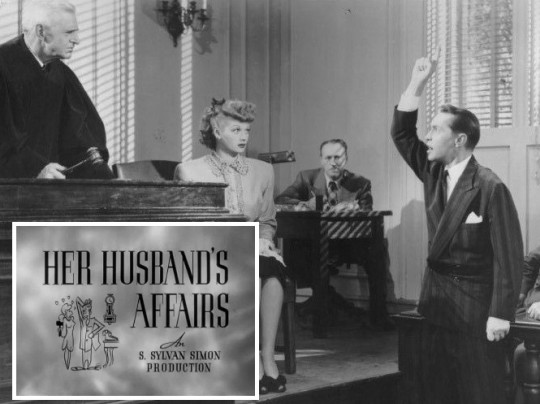
Selmer Jackson played the Judge in the Lucille Ball / Franchot Tone film Her Husband’s Affairs (1947). His first time playing a Judge was in the Jimmy Durante film Carnival (1935), in which Lucille Ball played a nurse. Twenty more Judge roles followed, including Mighty Joe Young (1949). Ball did the script for radio in 1949, although the actor playing the Judge went uncredited and unidentified.
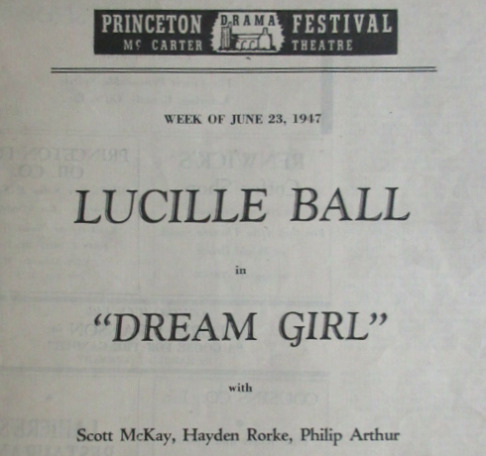
Edward Forbes played the Judge in Lucille Ball’s tour of the stage play Dream Girl (1947-48) which began in Princeton, New Jersey.

The film What My Next Husband Will Be was announced in June 1948 as a vehicle for Lucille Ball. It wasn’t long before Ball had been assigned to Miss Grant Takes Richmond (see below) and the role was recast with Rosalind Russell. The title was changed to Tell It To The Judge (1949) and Russell’s character was changed from a Broadway star, to a Federal Judge.
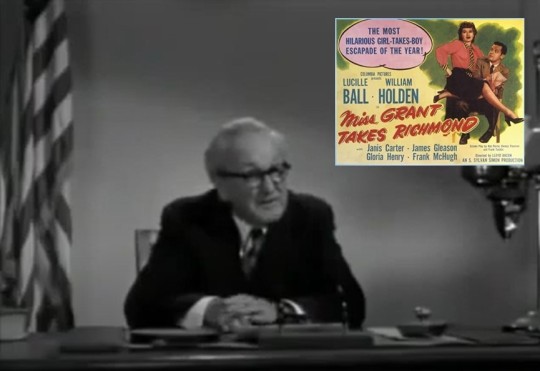
George Cleveland played Judge Ben Grant in Miss Grant Takes Richmond (1949) starring Lucille Ball and William Holden. The Judge is the uncle of Ellen Grant, the title character played by Lucy. This was Cleveland’s fifth film with Lucille Ball in four years. In 1954, Cleveland played a Judge on TV’s “Death Valley Days.”
IN RECESS
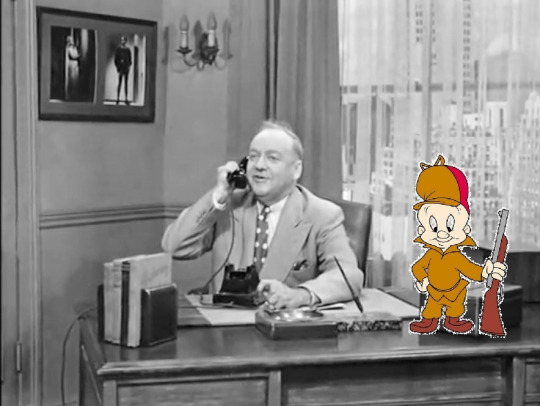
When Ball did Miss Grant on radio in 1950, the role of Judge Grant was taken by Arthur Q. Bryan, best known as the voice of Elmer Fudd. Bryan played Mr. Chambers, new owner of the Tropicana in “Ricky Loses His Voice” (1952).

Gale Gordon played Judge Skinner in the My Favorite Husband episode “Valentine’s Day” broadcast on February 11, 1949 on CBS Radio.
JUDGE: “There is no problem too big to solve. Into every life a little rain must fall. Every cloud has a silver lining, and it is always darkest before the dawn.” LIZ: “Well now that we’ve had the weather report, let’s get on with the case!”
Lucy ended up appearing before another Judge played by Gale Gordon on “The Lucy-Desi Comedy Hour” (see below).
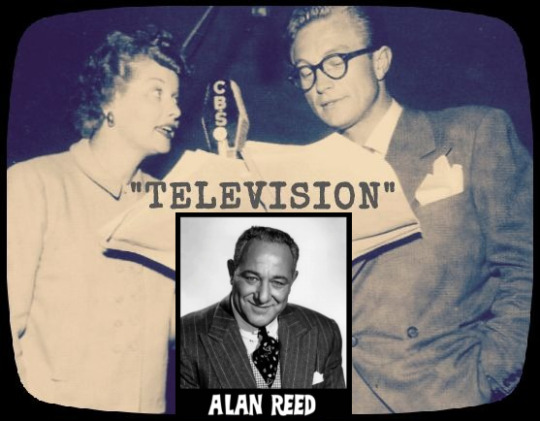
Alan Reed played Harry, the Judge in the My Favorite Husband episode “Television” broadcast on CBS Radio on June 17, 1949. Reed was best known as the voice of Fred Flintsone, but also appeared as a cafe owner in “Lucy Visits the White House” (1963).
FINAL ARGUMENTS
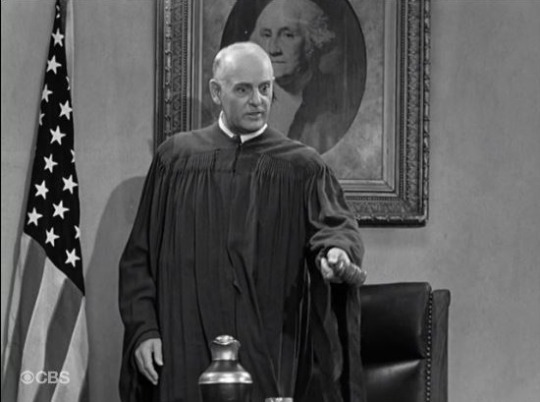
“Television” was the basis for the “I Love Lucy” episode “The Courtroom” (1952), in which the Judge was played by Moroni Olsen.
LUCY: “Well, Your Honor, now that I think of it, maybe it was Ricky who took the back off the set.” JUDGE: “Really?” RICKY: “Well, now that I think of it...yeah.”
Olsen played a Judge in three other films.
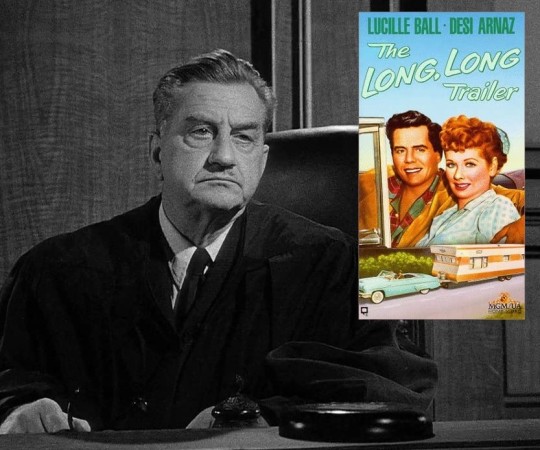
Fay Roop played a Judge in The Long, Long Trailer (1954). He also played a Judge on “Perry Mason”, “The Twilight Zone”, and several other TV shows and films.

Jorge Treviño played a Judge in the very first episode of “The Lucy-Desi Comedy Hour” “Lucy Takes a Cruise to Havana” (1957). Treviño had played Ricky's Uncle Alberto when “The Ricardos Visit Cuba” (1956).

Gale Gordon played Judge Phillips in “Lucy Makes Room for Danny” (1958), an episode of “The Lucy-Desi Comedy Hour” which was a cross-over with “Make Room for Daddy.”

Ernest Sarracino played the Danfield Judge in “Lucy and the Runaway Butterfly” (1963). After Lucy races through his courtroom with a butterfly net, the Judge explodes at the Prosecuting Attorney.
JUDGE: “Mr. McClay! This is nothing more than a cheap theatrical stunt designed to prejudice the jury! Remove this woman from the courtroom! Order in the court!” (Lucy’s net lands over the Judge’s head)
In 1966 he played an Italian Judge on “The Red Skelton Show.” He returned for two episodes of “Here's Lucy.”
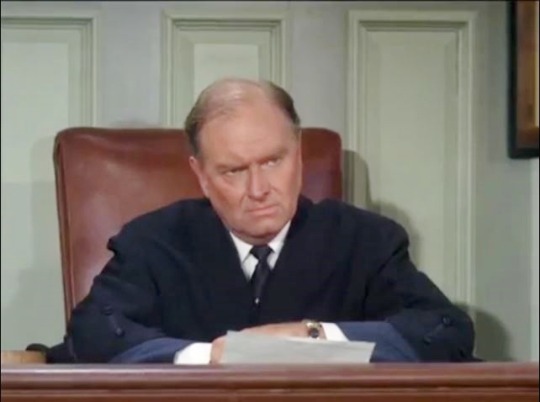
Busy character actor Parley Baer played humorless Judge Jack D. Kasten in “Lucy the Meter Maid” (1964). After Lucy attempt to re-enact the circumstance of ticketing Viv’s car, the Judge stops her mid-testimony.
JUDGE KASTEN: “Officer Carmichael, will you please explain the meaning of this travesty?” LUCY: “With the court’s indulgence, I’m trying to establish a time element.”
Baer played MGM’s Mr. Reilly in “Ricky Needs an Agent” (1955) and the furniture salesman Mr. Perry in “Lucy Gets Chummy with the Neighbors” (1957). This is the second of his five appearances on “The Lucy Show,” including another Judge! He also made two appearances on “Here’s Lucy.” He played a Judge on “The Joey Bishop Show” (1964) and “My Living Doll” (1965), both filmed at Desilu Studios. In addtion, he played a Judge on a dozen other film and TV shows.

Harry Holcombe played a Judge in Yours, Mine and Ours (1968) starring Lucille Ball and Henry Fonda. Holcombe played Judges in 18 film and TV shows, including two episodes of “Perry Mason.” He did background work on “Here’s Lucy,” including the series finale, “Lucy Fights the System” (1974).

John McGiver played the Judge in “Lucy is Her Own Lawyer” (1964).
JUDGE: “Mrs. Carmichael. Is it absolutely necessary to have this incessant jumping back and forth? You’re making the Bench nervous.”
McGiver previously appeared on the series in “Lucy is a Kangaroo for a Day” (1962). He appeared opposite Lucille Ball as Mr. Babcock in the movie musical Mame (1974), a film that also featured a Judge (see below). He played five other Judges in films and TV shows, including Judge Thatcher in the 1973 musical Tom Sawyer.

Sid Gould played the Camden Cove Judge in “Lucy and the Soap Opera” (1966).
JUDGE: “Order in the court!” LUCY: “Hear me out, Your Honor!” MR. SHANNON: “Hear her out? Throw her out!”
A frequent supporting player on “The Lucy Show” and “Here’s Lucy,” Gould was Lucille Ball’s cousin by marriage to Gary Morton.

Parley Baer returned to play another Judge (this time with eyeglasses) when “Lucy Sues Mooney” in 1967.
JUDGE: “Ladies and gentlemen of the jury. Any lady who would admit to being over thirty must be telling the truth.” MR. MOONEY: “She wouldn’t be telling the truth if she admitted to being over forty!”
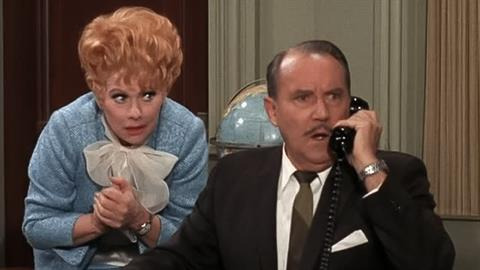
In “Lucy the Conclusion Jumper” (1968), Kim and her classmate Don are talking about keeping a household budget and visiting a city hall Judge for a school project. Lucy jumps to the conclusion they are going to get married! Lucy urges Harry to meet her at the Marriage License Office because she thinks Kim is about to elope with the supermarket box boy. When Harry hestitates, she says:
LUCY: “Well, she’s not going down there just to sing ‘Here comes the Judge! Here comes the Judge!’”

Two years later, in “Lucy and Sammy Davis Jr.” (1970), Sammy says his producer loves to sue and that his favorite words are...
“Here comes the Judge! Here comes the Judge!”
This is a catch-phrase popularized on “Rowan and Martin’s Laugh-In”, first spoken by comic Pigmeat Markham, and later by Davis. The NBC show’s second half hour aired opposite “Here’s Lucy.”
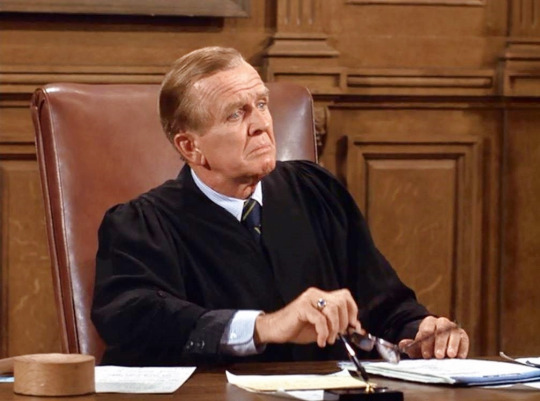
Hayden Rorke plays Judge Gibson in “Lucy and the Raffle” (1971). Coincidentally, the episode also features Gale Gordon and Sid Gould, former Lucyverse Judges. Rorke appeared on stage with Ball in Dream Girl (1947-48), a show which also featured a Judge (see above). He appeared on “I Love Lucy” as one of “The New Neighbors” (1952). Rorke was best known for his role as Dr. Bellows on “I Dream of Jeannie”.

John Wheeler played Judge Bregoff in Lucille Ball’s Mame (1974). In 1991, he played Judge Ciglio in the TV movie Runaway Father. The film also featured former Lucy Judge John McGiver (see above) as lawyer Babcock.

Lucy’s final jurist was Allan Rich as Judge Cameron Potter in “Lucy, Legal Eagle” (1986). This was the penultimate aired episode of a Lucille Ball sitcom. Rich started playing Judges on TV in 1976. In 1983, he played four TV Judges, including several appearances on “Hill Street Blues” and “Gimme A Break”. His first big screen Judge was in 1997′s Armistad. In all, Rich donned Judges robes two dozen times!
COURT ADJOURNED!

#Judge#Judges#I Love Lucy#Lucille Ball#The Lucy Show#Here's Lucy#My Favorite Husband#Life With Lucy#Allan Rich#John Wheeler#John McGiver#Moroni Olsen#Gale Gordon#Hayden Rorke#Laugh-In#Parley Baer#Sammy Davis Jr.#Sid Gould#Harry Holcombe#Ernest Sarracino#Jorge Trevino#Fay Roop#Alan Reed#George Cleveland#Edward Forbes#Desi Arnaz#Billy Gilbert#Walter Abel#Julius Tanner#Selmer Jackson
0 notes
Text
Kevin Durant On Building His Brand And His Legacy | Forbes

youtube
Kevin Durant is using his power as an athlete to fuel his future as a businessman. Durant signed a $164 million contract with the Brooklyn Nets in the summer of 2019 and a ten-year, $275 million Nike shoe deal that assumes his continued superstardom. With those two alone, he will earn more than $70 million this season without suiting up for a single game. Durant’s goal is to turn that income into assets at a scale few athletes not named Jordan or LeBron have attempted.
Durant’s outside business vehicle: Thirty Five Ventures, cofounded with his manager, Rich Kleiman, a music industry veteran who previously helped start the sports division of Jay-Z’s talent agency, Roc Nation. Thirty Five Ventures has 15 full-time employees running Durant’s endorsements, foundation, and expanding collection of startups and media plays. Over the past few years he’s plowed more than $15 million into 40-plus startups. Nearly 70% of the companies have raised subsequent rounds at higher valuations, scoring what Durant claims are paper gains topping 400%.
More directly, Thirty Five Ventures has a production arm creating basketball-themed documentaries, series and scripted shows for outlets like Apple, YouTube and ESPN. “LeBron James was the first case study that you can build a real business while you’re playing,” says Kleiman. “Kevin is building a real and authentic company.”
For Durant, a 30 Under 30 alum who recently hit the grand old age of 31, the goal is nothing short of a ten-digit net worth. By the time his playing career is over, he’ll have made well over $500 million from salary and sponsorships. Now, Durant says, “I want to use the checks I get from companies to create true generational wealth.”
Subscribe to ForbesLive for more summit content: https://www.youtube.com/channel/UCxYoShcfPZ1cxydh9w8pVbw
Visit the ForbesLive event page to register for Forbes events: https://www.forbes.com/connect/events/
Subscribe to FORBES: https://www.youtube.com/user/Forbes?sub_confirmation=1
Stay Connected Forbes newsletters: https://newsletters.editorial.forbes.com Forbes on Facebook: http://fb.com/forbes Forbes Video on Twitter: http://www.twitter.com/forbes Forbes Video on Instagram: http://instagram.com/forbes More From Forbes: http://forbes.com
Forbes covers the intersection of entrepreneurship, wealth, technology, business and lifestyle with a focus on people and success.
The post Kevin Durant On Building His Brand And His Legacy | Forbes appeared first on News Lookout.
source https://newslookout.com/business/kevin-durant-on-building-his-brand-and-his-legacy-forbes/
0 notes
Text
The NBA’s 10 best games of the 2010s

Ray Allen’s greatest moment.
From the Cavs’ incredible Game 7 win over the Warriors to Ray Allen’s championship-clinching shot for the Heat, these are the NBA’s best games of the last decade.
As a follow up to last week’s article about the top 10 most entertaining games from the 2019-20 season — as ranked with an algorithm created by Thuuz Sports — here’s a look at the 10 most entertaining games of the entire decade. Enjoy.
10) Houston Rockets 98, Portland Trail Blazers 99: May 1, 2014
Any game that forever freezes you to where you were when you watched it is special. Few can do it. Most leave a hazy aftertaste, where you think you remember where you were, who you were with, what you were eating, and whether it was raining outside. But in reality it’s just fog.
For those who witnessed it live, Damian Lillard’s series-ending moon shot against the Houston Rockets was the rare sporting event that obliterated all five senses and momentarily stopped time.
youtube
It’s a fun series to reminisce about. At the time, I was recapping games for ESPN’s TrueHoop blog, Red94, and vividly remember the immortal release point on LaMarcus Aldridge’s baseline turnaround that made Dwight Howard and Omer Asik (remember him?) look so helpless, as well as how confident and smooth Chandler Parsons, Jeremy Lin, and Wesley Matthews moved around the court before injuries ruined them.
Anyway, Lillard didn’t want to put the end of Game 6 in his hands — he needed to. In his mind, no other options ever existed. Before the play begins, Lillard is a panther in tall grass. The second Nicolas Batum gets handed the ball on the opposite sideline, he cannonballs up, claps his hands with enough force to let everyone in the building know “this is not a drill” (the play was originally designed for LaMarcus Aldridge), catches the pass, rotates his shoulders, then drops the curtain.
9) Memphis Grizzlies 117, San Antonio Spurs 116: Dec. 17, 2014
This game went into triple overtime, but the end of regulation is the best part. A flurry of game-tying threes in the last seven seconds, capped off by Marc Gasol stepping through Manu Ginobili’s blanket coverage to bank in a prayer as the buzzer sounded. It was the most improbable big shot of the decade ... until Tim Duncan one-upped him at the end of the second overtime with a one-dribble fadeaway over Gasol’s fingertips that ricocheted off the backboard, twirling around the rim, and somehow dropped in.
8) Oklahoma City Thunder 119, Toronto Raptors 118: Mar. 20, 2014
This was the only game on this list that was unrecognizable solely from the date and two teams. But when viewed through the prism of Kevin Durant, at or near his lanky overlord peak, it becomes a recovered artifact.
youtube
Let’s start at the end. The Thunder were down by eight with 48 seconds left in double overtime when Durant wiggled free for an open three.
About 45 seconds later he stuck another one, this time from the left wing, drifting towards the sideline with a hand in his face to give the Thunder a one-point lead. By his side? Jeremy Lamb, Reggie Jackson, and Derek Fisher.
This was Durant at his most lethal, near the end of a 41-game streak in which he never scored fewer than 25 points (the third-longest in NBA history). If he were a character in a novel, the editor would ask the writer to turn down the volume. Durant is too absurd for real life, let alone someone’s imagination.
7) Oklahoma City Thunder 133, Memphis Grizzlies 123: May 9, 2011
A few months ago my wife and I were eating dinner at a restaurant that had a massive projector screen behind the bar. On it, for no discernable reason, was this game. When I asked our waiter why it was on, he looked at me like I had two eyes. “Dude, that game was incredible.”
He’s not wrong. It was a pivotal Game 4 that went into triple overtime. What a blessing.
6) Cleveland Cavaliers 93, Golden State Warriors 89: June 19, 2016
Pretty much since it happened, the last few minutes of this game have rattled around my head like a flawed, inescapable pop song. I’ve watched, discussed and thought about them thousands of times. Over and over. They’re some of basketball’s most historic moments, clustered together in one messy crescendo that then led to Draymond Green’s parking lot phone call which sent a wrecking ball through competitive balance’s front window.
The weeks that followed this game felt like a fever dream. Live, the immense weight of it all just sort of sat on your chest. It’s impossible to process consequential sports history in real time; simply watching it yields indescribable emotions. Breathing is not easy. If my phone rang I didn’t hear it.
youtube
Very few games, if any before it, have ever prompted the number of nicknames this one did: The Block, The Stop, The Shot. There’s no shorthand for greatness, and most of these moments elude language. But context isn’t even necessary for another NBA fan to know what you’re talking about when one gets mentioned. All were epic feats of athletic dynamism — or tragic misadventures, depending on your perspective — that will live on forever.
(Sidebar: The most underrated sequence came right after Love somehow hung on for dear life in front of Curry at the top of the key, when Kyrie Irving channeled his inner Icarus. With 30 seconds left and a three-point lead, Irving raced the length of the court and nearly dribbled the ball out of bounds. The obvious play was to sit tight and burn clock. Was he bored? Did he want to be the hero, after already hitting the heroic shot? Did he completely forget that it was Game 7 of the NBA Finals? Has anyone ever asked Irving about that play?)
There is a whiff of “I mean, somebody had to win” syndrome when you re-watch the end of this game. The players were exhausted. The offense was stilted and formulaic. Both teams knew each other too well. Grace was gone. All that might be true, but sports aren’t scripted. It’s what makes them so compelling. And even after beauty gets stripped from the play-by-play, there’s no denying this game’s pantheon position.
5) Golden State Warriors 121, Oklahoma City Thunder 118: Feb. 27, 2016
This game was an asteroid colliding with Earth. When Curry hit the biggest shot of his career — an overtime game-winner from about 32 feet — it opened so many eyes to a revolution in real time. Everyone who watched it remembers where they were. (What they probably don’t remember is that OKC had the led for 51 minutes.)
youtube
This game was important. And if judged solely on excitement, it’s an all-timer.
4) Denver Nuggets 116, Portland Trail Blazers 112: May 5, 2019
By my calculations, every single shot in this fourth quarter went in, which is pretty good. It was Game 4, a must-win for the Nuggets, and the peak of Jamal Murray’s career.
youtube
Murry finished with 34 points and went 11-for-11 at the free-throw line, about 48 hours after he played 55 minutes in Game 3.
3) San Antonio Spurs 129, Golden State Warriors 127: May 6, 2013
The Spurs won this game and this series — Manu forever! — but this was the Warriors’ point of origin, a double-overtime adrenaline rush that reset expectations for Curry and Klay Thompson. (At the time, Draymond was still coming off the bench.)
youtube
It’s hard not to call this one of the most pivotal games of the century. It changed everything.
2) Cleveland Cavaliers 109, Golden State Warriors 108: Dec. 25, 2016
This game featured the second-most-impressive shot of Irving’s career, an operatic mid-post turnaround over Thompson’s near-perfect contest that gave Cleveland a one-point lead with three seconds to go.
youtube
The basketball in this one was objectively more thrilling than what we saw in Game 7 the previous season, but it’s still kind of weird to see it this high.
1) Miami Heat 103, San Antonio Spurs 100: June 18, 2013
I mean, were you expecting anything else?
Game 6 of the 2013 NBA Finals had it all. And by “it all” I mean one of the most cinematic climaxes in basketball history. Few plays are deserving of their own oral history. This was, from Gregg Popovich’s decision to pull Tim Duncan off the floor to Chris Bosh and Ray Allen having the split-second wherewithal to grab, twirl, and hopscotch behind the three-point line for a shot that changed the course of history.
If you’ve seen it once you’ve seen it one thousand times. It was pure shell shock, a picturesque work of art that perhaps no other player could have pulled off.
youtube
Spurs fans would rather chug vinegar than watch that final minute ever again. But low moments make the highs taste that much sweeter. There is no progress without struggle, etc. And you didn’t need to care about the teams in the game to drown in your own flop sweat as it neared conclusion.
Only a few games are powerful enough to make your body react involuntarily. This one did.
0 notes
Photo

Launce: Woah, Hunter looks exactly like me! It’s like looking in a mirror! How have I never noticed this before? Holy shit, what does this mean??
13 notes
·
View notes